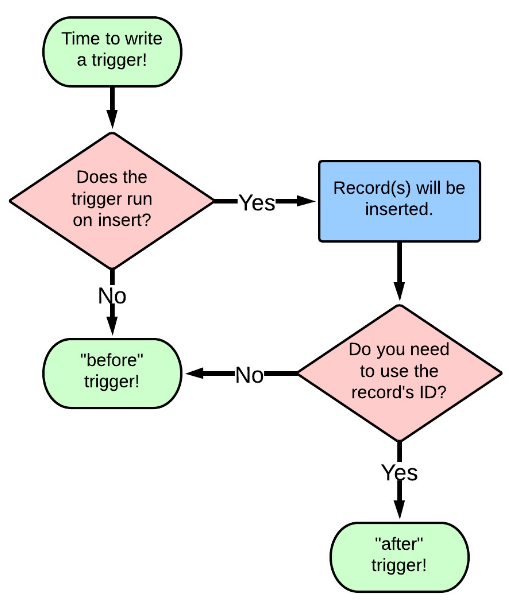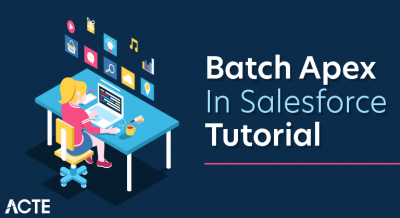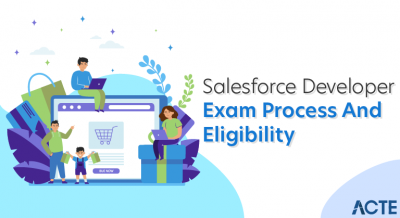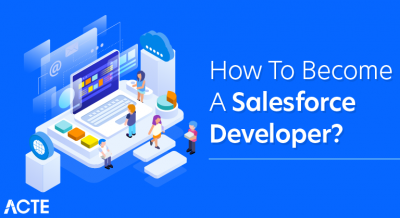
- Introduction to Salesforce Order of Execution
- Stages of Execution in Salesforce
- Validation Rules Execution
- Before Triggers Execution
- Execution of Workflow Rules
- After Triggers Execution
- Assignment Rules Execution
- Auto-Response and Escalation Rules
Introduction to Salesforce Order of Execution
The Order of Execution in Salesforce defines the precise sequence of events that occur when a record is inserted, updated, or deleted. This structured order ensures that different automation tools such as validation rules, workflows, processes, and triggers execute in a consistent and predictable manner. Understanding this sequence is crucial for developers and administrators aiming to build efficient, scalable, and error-free solutions. When a record changes, Salesforce executes a specific set of steps that include system validations, before and after triggers, duplicate rule checks, workflow rules, processes, escalation rules, and post-commit logic. Each step has a defined place in the sequence, and skipping or misunderstanding the order can lead to unexpected results, as emphasized in Salesforce Training. For example, a workflow field update may trigger a record to go through the validation and trigger cycles again, potentially causing performance issues or logic errors. Failing to consider the order of execution may also result in conflicts where one automation unintentionally overrides the effects of another. This can lead to data inconsistencies, failed DML operations, or even infinite loops if not properly handled. Therefore, it is essential for Salesforce professionals to be well-versed in the execution order to ensure harmonious automation, avoid redundancy, and maintain data integrity across their applications.
To Explore Salesforce in Depth, Check Out Our Comprehensive Salesforce Training To Gain Insights From Our Experts!
Stages of Execution in Salesforce
In Salesforce, the order of execution refers to a predefined sequence of operations that take place whenever a record is inserted, updated, deleted, or undeleted. These operations are grouped into distinct stages, each with its specific purpose and impact on the record’s lifecycle. Understanding these stages is critical for ensuring that automation tools and custom code behave as expected, without causing conflicts or unintended consequences. The execution begins with system validations, such as checking required fields and field formats. Next, before triggers run, allowing developers to modify record values before they are saved to the database, a concept covered in Salesforce Administrator Certification. After these, custom validations and duplicate rules are evaluated. If any validation fails, the process is halted, and errors are thrown. Following validations, the record is saved to the database (but not committed), and after triggers execute. These are used to perform operations that rely on the record ID or values already in the database. Then, assignment rules, auto-response rules, and workflow rules are triggered. If any workflow field updates occur, the record goes through another round of before and after triggers and validations.

Next, process builder flows and escalation rules run. Finally, once all automation has been executed and the transaction is ready to complete, roll-up summary fields, entitlement rules, and post-commit logic, such as sending emails and executing asynchronous operations like @future methods, are processed. By understanding each stage, Salesforce professionals can design more reliable and maintainable solutions, ensuring that customizations and automations work together seamlessly.
Validation Rules Execution
- Definition: Validation rules are automated checks that run to ensure data entered into a system meets specified criteria before it is saved.
- Timing: Validation rules execute immediately after user input but before the record is saved to the database, preventing invalid data from being committed.
- Purpose: Their main goal is to enforce data integrity and business logic by verifying that input values meet defined conditions.
- How They Work: When a user attempts to save a record, the system evaluates all applicable validation rules, helping to prevent issues like Data Skew in Salesforce.
- Use Cases: Common scenarios include checking for required fields, value ranges (e.g., dates, numbers), matching patterns (e.g., email format), and cross-field dependencies.
- User Feedback: Validation rules provide immediate feedback to users, helping correct errors before submission and reducing data quality issues.
- Limitations: Validation rules typically focus on single-record validation and cannot perform complex multi-record or cross-object validations, which may require triggers or workflows.
- Definition: Before triggers are executed before a database operation (INSERT, UPDATE, DELETE) takes place on a record. They fire prior to the actual data modification.
- Timing: These triggers run immediately before the data is written to the database, allowing you to intervene or modify data before the commit.
- Purpose: Before triggers are primarily used to validate data, modify field values, or enforce business rules before the changes are saved, as covered in Salesforce Training.
- Modifying Data: Unlike after triggers, before triggers allow modification of the triggering record’s data. For example, you can auto-populate fields or correct values before the database stores them.
- Use Cases: Common use cases include data validation, default value assignments, data cleansing, and preventing unauthorized changes before the transaction is finalized.
- Preventing Operations: They can prevent the operation by raising errors or exceptions during execution if certain conditions are not met, effectively blocking invalid data from being saved.
- Performance and Logic: Since before triggers execute before the actual data change, they help maintain data integrity at the earliest stage. However, complex logic can affect performance, so efficient coding is important.
- Definition: After triggers are fired after a database operation (INSERT, UPDATE, DELETE) has been completed successfully on a record.
- Timing: They execute only after the changes are committed to the database but before the transaction ends, ensuring the data modification has occurred.
- Purpose: After triggers are typically used for actions that depend on the final state of the data, such as auditing, logging, or cascading operations.
- Read-Only Context: The record that fired the trigger is read-only after triggers. This means you cannot modify the triggering record in an after trigger, similar to how you Manage user access with Salesforce permission sets.
- Use Cases: Common uses include sending notifications, updating related tables, or enforcing complex business rules that require the updated data to be stable.
- Transaction Context: If an after trigger fails, it can roll back the entire transaction, ensuring data integrity and preventing partial updates.
- Performance Considerations: Since after triggers run after the DML operation, they can add latency to transactions if complex logic is executed, so trigger logic should be efficient.
Are You Interested in Learning More About Salesforce? Sign Up For Our Salesforce Training Today!
Before Triggers Execution

Execution of Workflow Rules
Workflow Rules in Salesforce are a powerful automation tool used to perform standard internal procedures and processes automatically when specific conditions are met. These rules help streamline operations by automating tasks such as sending email alerts, updating fields, creating tasks, or sending outbound messages. Understanding the execution of Workflow Rules is essential to ensure they function correctly and in harmony with other Salesforce automation tools. The execution of Workflow Rules begins after a record is saved to the database and after both before and after triggers have executed. Once Salesforce evaluates and saves the record, it checks whether any active Workflow Rules meet their defined criteria, an important step when Scaling Salesforce DevOps. If a record satisfies the rule’s condition, the associated workflow actions are queued for execution. There are two types of workflow actions: immediate actions and time-dependent actions. Immediate actions are executed as soon as the rule criteria are met. Time-dependent actions are scheduled to execute after a specified time delay and are dependent on the time triggers configured in the rule. If a field update is part of a workflow action, Salesforce re-evaluates the record to see if any other rules or triggers are impacted, potentially causing a new round of validation and trigger execution. However, Workflow Rules do not re-trigger themselves or other workflow rules, which helps prevent recursion. Still, they may indirectly affect other processes like Process Builder flows or Apex triggers. Therefore, developers must carefully design workflows to avoid unintended consequences, maintain data integrity, and ensure predictable automation behavior.
Interested in Obtaining Your Salesforce Certificate? View The Salesforce Training Offered By ACTE Right Now!
After Triggers Execution
Assignment Rules Execution
Assignment Rules in Salesforce are used primarily to automate the routing of records, such as Leads or Cases, to the appropriate users or queues based on predefined criteria. These rules help streamline workload distribution, ensuring that records are assigned efficiently and according to business needs. Understanding how assignment rules execute is important for configuring them effectively and avoiding conflicts with other automation processes. Assignment Rules execute after the record has passed through system validations, triggers, and workflow rules but before the record is committed to the database. When a Lead or Case is created or updated, Salesforce checks whether assignment rules are enabled for that operation. If enabled, Salesforce evaluates the record against the criteria set in the assignment rule entries in order. The first matching entry determines the owner or queue to which the record is assigned, a key concept in Omni-Channel Salesforce. This reassignment occurs only once during the transaction unless explicitly invoked again through custom logic or APIs. If no assignment rule entries match the record, the ownership remains unchanged or defaults based on the initial creation context. Assignment rules are designed to work seamlessly with other automations, but conflicts can arise if, for example, triggers or workflows change the owner after assignment rules execute. Additionally, time-dependent workflows or processes do not trigger assignment rules again; they run only during the initial creation or update when the rule is invoked. To ensure predictable behavior, administrators must carefully plan the order of automation, making sure assignment rules do not conflict with other processes that modify record ownership or related fields. By understanding the execution timing and logic of assignment rules, Salesforce users can optimize their lead and case management processes for better efficiency and clarity.
Preparing for a Salesforce Job Interview? Check Out Our Blog on Salesforce Interview Questions and Answers
Auto-Response and Escalation Rules
Auto-Response and Escalation Rules are key automation features in Salesforce designed to enhance customer service efficiency and ensure timely case management. Both rules play distinct but complementary roles in handling incoming support cases, improving communication, and maintaining service level agreements (SLAs). Auto-Response Rules are triggered immediately after a case is created or updated, and after assignment rules execute. These rules automatically send predefined email responses to customers or internal users based on the case’s characteristics, such as priority, origin, or product type. Auto-response rules help confirm receipt of a customer’s request and provide initial guidance or information without requiring manual intervention. Multiple auto-response rule entries can be created, each with specific criteria, but only the first matching rule is applied during execution, as explained in Salesforce Training. Escalation Rules, on the other hand, focus on managing the lifecycle of a case to ensure it receives timely attention. These rules monitor cases against predefined escalation criteria, such as elapsed time without resolution or lack of response. If a case meets escalation conditions, the rule automatically reassigns the case to a higher-level support agent, sends notification emails, or triggers other actions to expedite resolution. Escalation rules operate periodically, evaluating cases that have not yet been resolved or closed. Both Auto-Response and Escalation Rules execute after workflow rules and assignment rules but before post-commit logic. Understanding their execution timing helps administrators coordinate multiple automation processes to prevent conflicts and ensure consistent case handling. Properly configured, these rules enhance customer satisfaction by ensuring prompt communication and effective case escalation within support teams.





